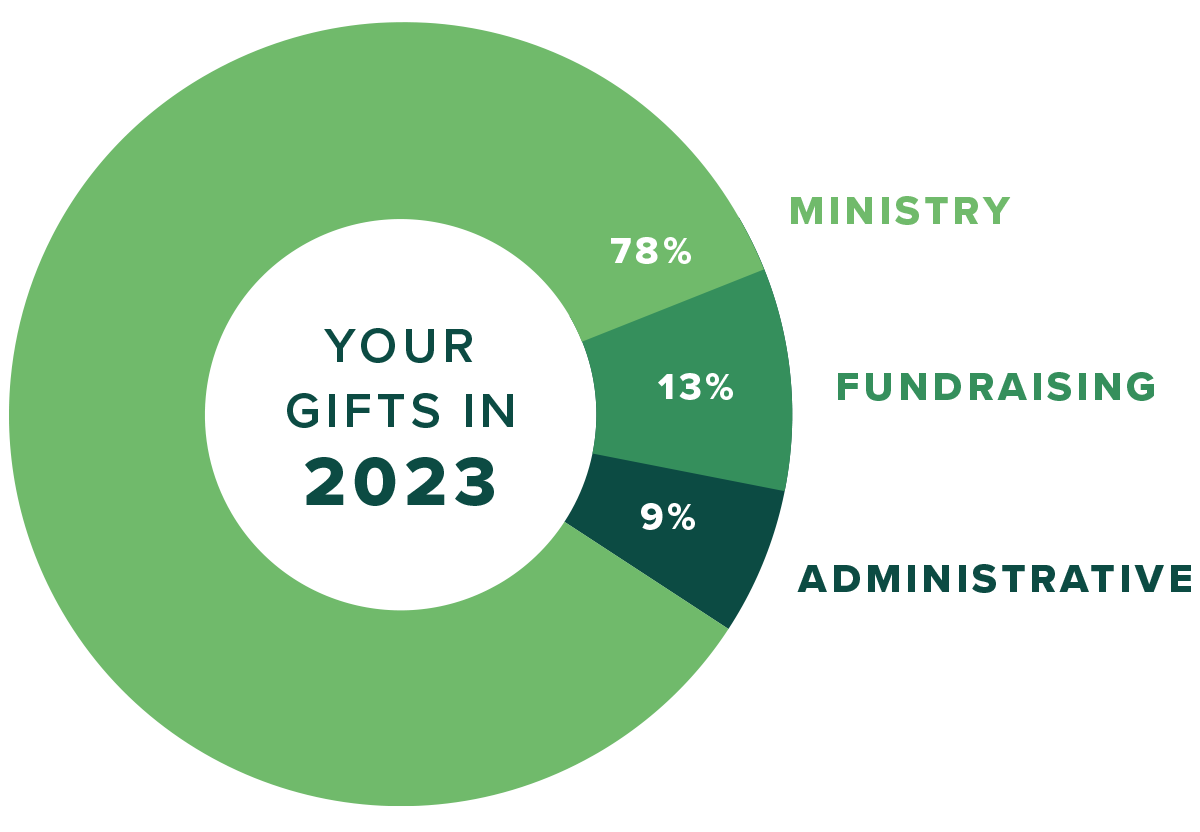Child Champion Scores Big in
Kids at a Hope Center in an impoverished community in Kenya learn a new skill that provides them with plenty of professional-grade soccer balls to practice with — and sell as a fundraiser— thanks to a solution-minded Child Champion.

Child Champion Caleb came up with an innovative solution to providing soccer balls to kids to practice with.
In most poor communities in Kenya, kids can’t afford to purchase a soccer ball so they creatively handcraft balls from locally available materials.
As a child, I watched my younger brother and his friends make balls from discarded plastic bags, dry banana leaves, and string.
They would insert the leaves into the plastic bags and wrap the strings around the plastic bag to make the ball hard.
I watched as they enjoyed playing soccer in the afternoons and only stopped when night fell.
This helped grow their skills and keep the hope of pursuing their dream alive.
Like my brother and his friends, most kids living in poverty put their creativity to use and play soccer using handcrafted balls. However, when kids need to train for competitions, they need professional soccer balls.
Caleb, a Child Champion at Deliverance Church Hope Center in Kakuyuni, Malindi, says, the handcrafted balls are a disadvantage to players because they are not the correct weight and size, which makes it hard for the ball to cover the distance on a standard soccer field.
Problem With Costly Soccer Balls
Luckily for kids at the Hope Center, they can play with the professional soccer balls available there. In 2022, when the Hope Center turned 3 years old, they registered into a cluster sports competition for kids older than 11.
Malindi cluster has 11 Hope Centers. The cluster organizes events that bring the Hope Centers together, and sports competition is one of them. In January that year, the center bought soccer balls for the kids to practice with in preparation for the event in April.
Unfortunately, three months down the line, the balls were worn out beyond repair.
“The kids had played with the balls, and they experienced wear and tear quickly, yet they needed to train for the competitions,” Caleb recalls.
During a monthly Hope Center leadership meeting, Caleb suggested that they should consider buying more balls to replace the old ones as they made the quarterly budget plans.
Finding a Lasting Solution
He was asked to account for the other two balls that had been purchased. Upon hearing how the balls wore out quickly, the leadership agreed that purchasing new soccer balls every quarter of the year was not sustainable and asked Caleb to try and find a lasting solution.
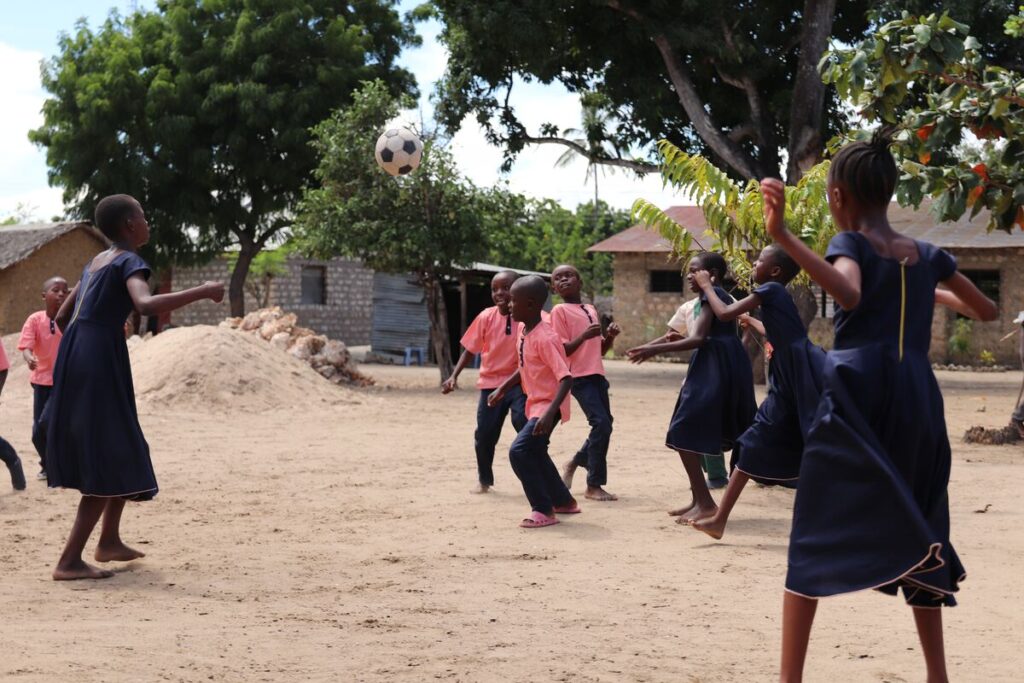
Kids at the Hope Center love kicking the soccer ball around.
As Caleb was thinking about a solution, the pastor’s wife, Aileen Munga, invited him to a skills exhibition by some youths in Kwale County.
At the event, as he walked around the exhibition, he saw a stand with soccer balls.
At first, he thought they had bought the balls and were selling them, but when he went closer, he saw the boys and girls demonstrating how the balls were made.
He took videos and photos of the whole process because he knew he had found a solution to his soccer ball problem at the Hope Center.
“I was thrilled at how professional soccer balls were being made and stitched by hand by the children who were around 12 years old. There and then, I knew deep down that it was one of the skills that was worth introducing at the Hope Center,” Caleb says.
After sharing with the leaders at the center, they prepared a budget and purchased the materials needed to make the balls. They also hired some facilitators with the skills to train the kids.
The Ball in Their Court
When Caleb told the kids about the training in January 2023, they were surprised and could not believe that they could make a ball.
“They were reluctant to join the skill training and were wondering how the clamps, threads, and leather pieces would make a ball — until the few that had joined made a finished ball,” he says.
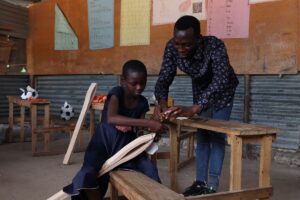
A trainer helps guide the kids in making a soccer ball.
The kids were thrilled to see this, and now the class has 15 kids learning how to make soccer balls.
Four months into learning the skill, the kids have made five balls they can train with.
Caleb says he hopes that in the next three months the kids will have mastered the skill to perfection, and that they will be making more balls.
The center is now scouting for markets in the nearby schools and other Hope Centers in the region and Caleb hopes that they can sell the balls for $35 each.
Currently, for someone to afford a ball from sports shops, they need to travel to Malindi town at a cost of $4, then buy a ball for $30 that might last them less than three months. But the balls that the center kids make last longer because the stitches are hand sewn and the material used is the best on the market.
“When you buy a ball from us, you are not only paying for the skills that have gone into it, but you are paying for a child’s effort, their love and time that has gone into making it,” Caleb says.
He hopes that the sale of soccer balls can be a fundraiser to purchase additional equipment such as jerseys, shoes, socks, and shorts for the soccer team at the center and expand the training.
Since the class began, Caleb has seen teamwork improve because of the coordination that’s necessary to make the balls. He has also seen the unity and love that has developed within the team.
As the kids learn the skill, his prayer is that through the training they can also learn and grow to be solution-minded people in the future.
Caleb, who has a bachelor’s degree in physical education, is proud that they now have a lasting solution to a problem that might have kept the kids from participating in soccer competitions.
How to Make a Soccer Ball
As you read this story, were you trying to picture what it looks like to hand stitch a soccer ball? Here’s how it’s done.
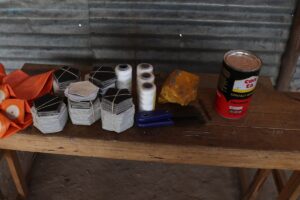
These are the supplies needed to make soccer balls.
The materials purchased by the Hope Center include:
- Leather soccer ball patches in hexagon and pentagon shapes
- Wax
- Contact adhesive
- Latex inner tubes, or bladders
- A single-tube punch
- Four wooden clamps
- Needles
- Strong polyester thread
- Skiving knives
Step 1: Select the Patterns
Soccer balls usually have two colors. At the Hope Center, they opted to go for the standard black and white colors.
A standard ball is made up of 32 patches of both hexagon and pentagon shapes. The kids begin by selecting the same colors of each shape separately, 12 pentagons and 20 hexagons.
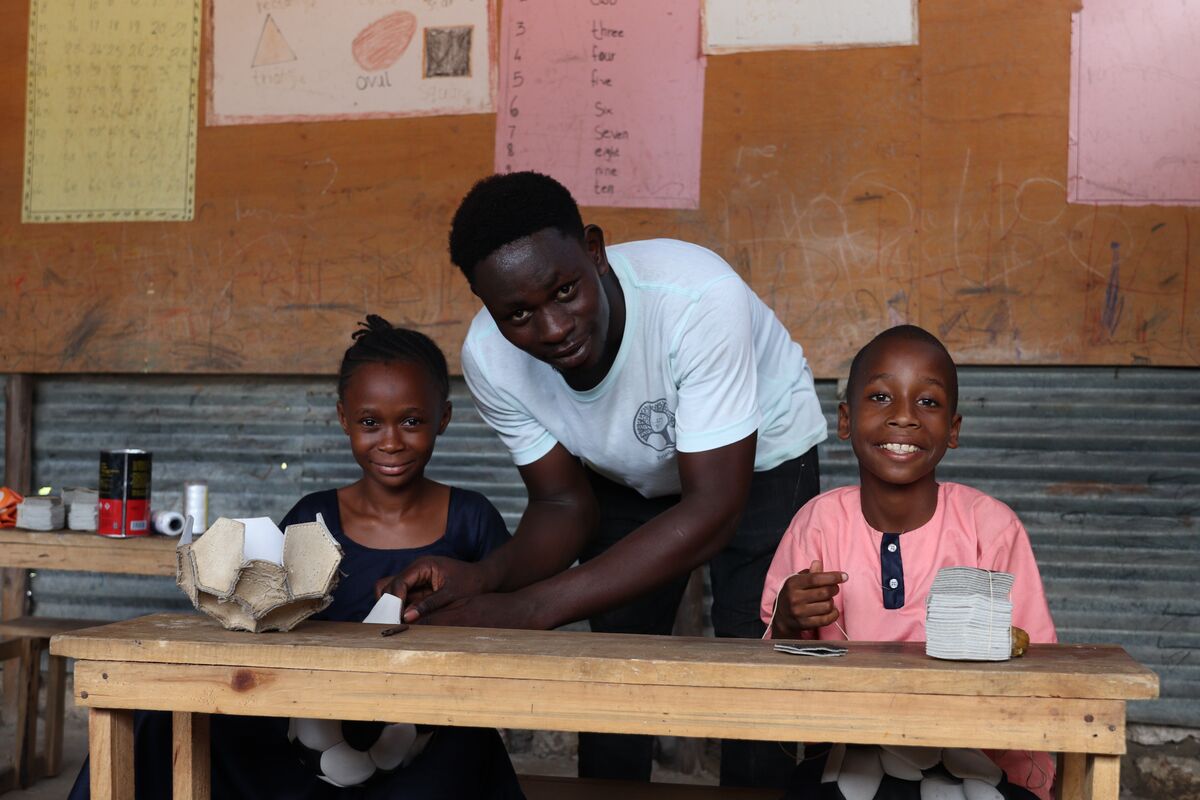
A trainer helps the kids craft the soccer balls.
It’s important that they use the same color for all the pentagons and a different color for the hexagons.
As purchased, the leather patches already have stitch holes and the edges have also been skived (thinned) to make it easier to stitch and fold them.
Step 2: Start Stitching
To stitch, they bring a hexagon and a pentagon together, with the outside part of the patches facing each other, so that it is stitched inside-out.
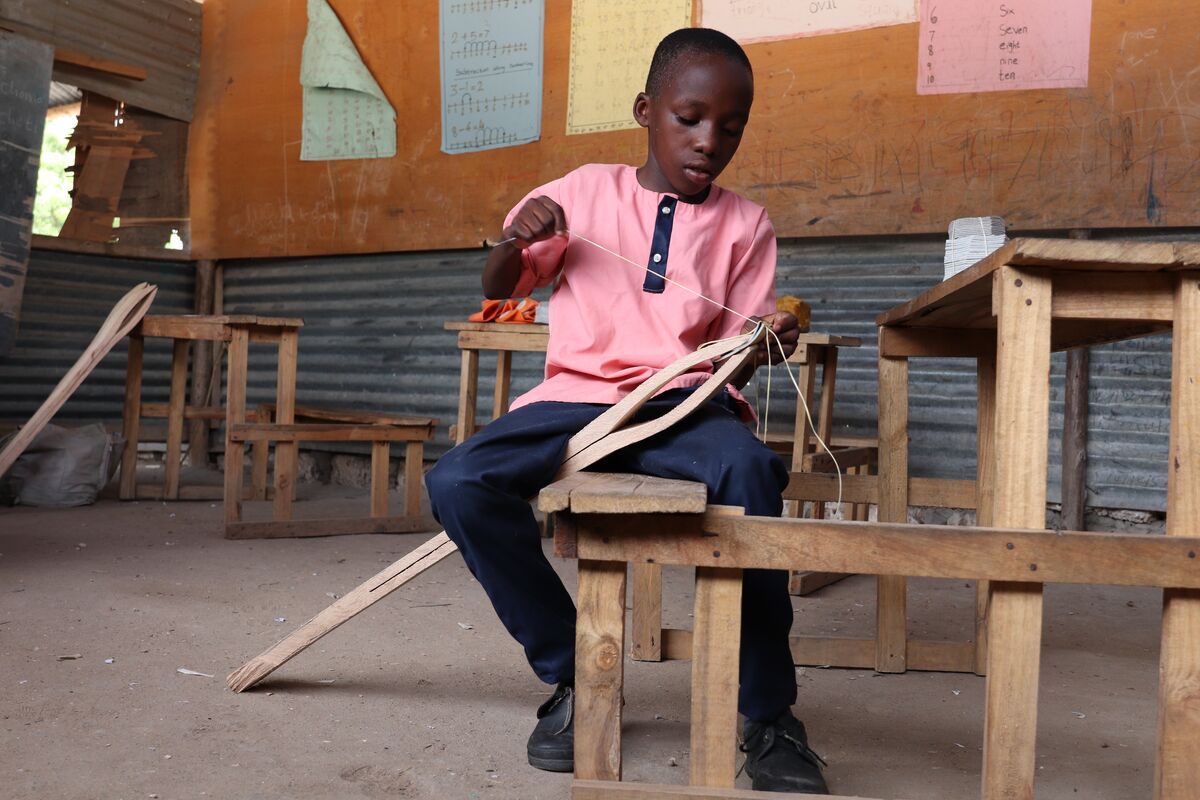
A boy makes a stitch after placing the material in a clamp.
The two patches together are placed inside a wooden clamp that holds them in position for stitching.
They then prepare the prepare the leather by skiving the edges and then wax the thread to reduce friction as it goes into the stitch holes.
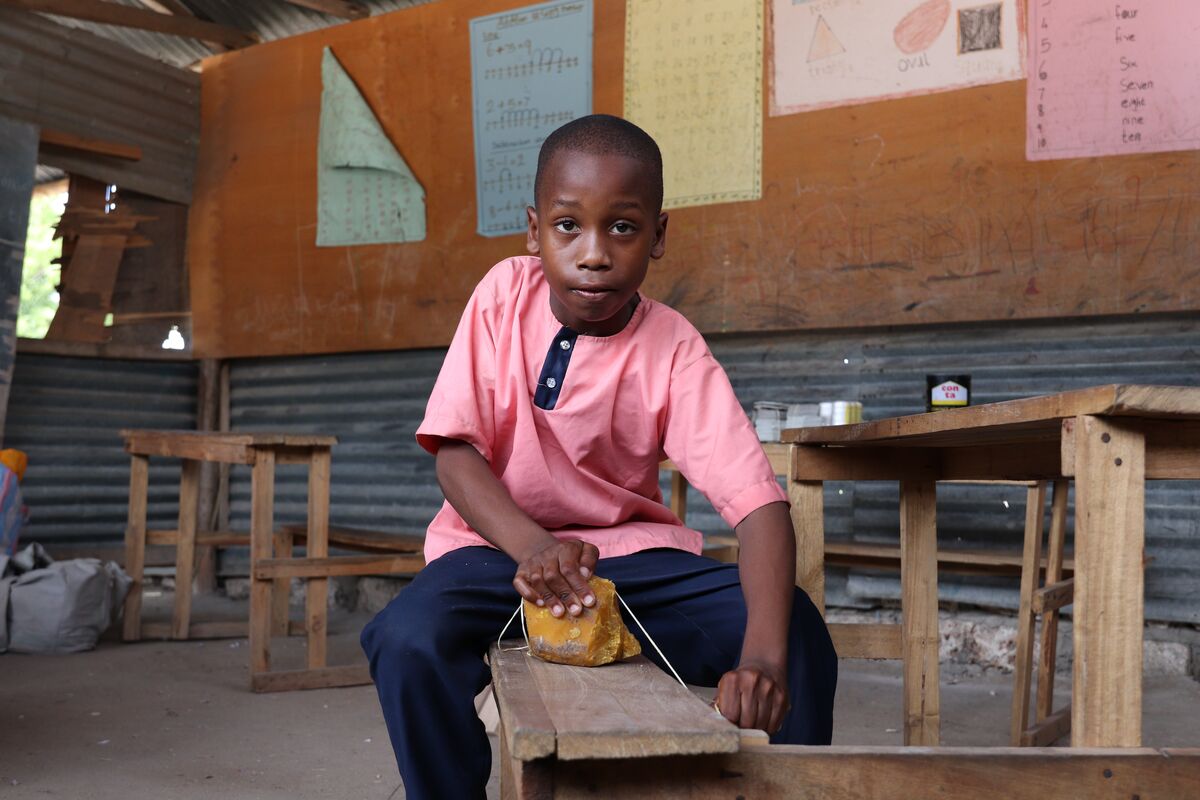
A boy waxes the thread to make stitching easier.
The thread is then inserted through a straight needle for the stitching process.
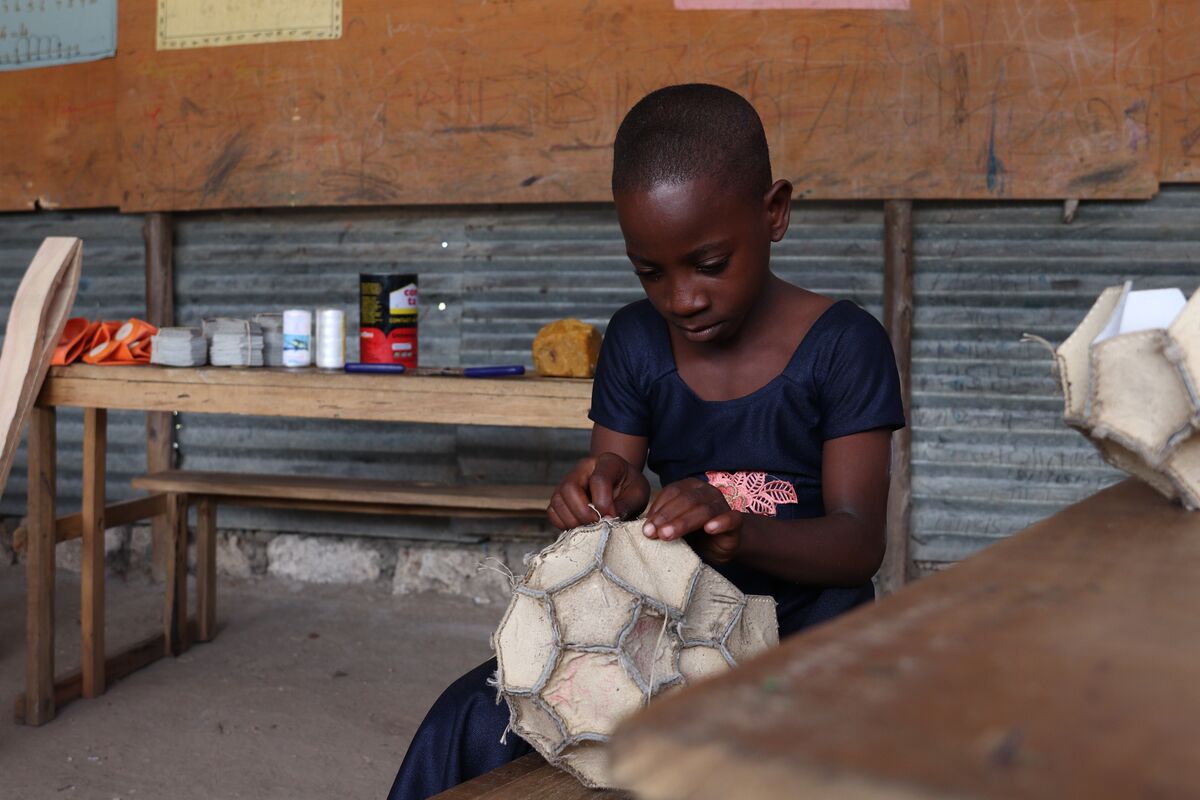
A girl finishes her stitching before turning the ball right-side-out.
Being young, the kids cannot independently perform a saddle stitch on the tough leather, so two kids do the saddle stitch on the patches.
They go on to stitch the patches until they have 16 patches stitched together to make a half ball, before stitching another half ball.
Step 3: Insert Tubes
The two half balls are then stitched together to make a full ball. Since the ball is stitched inside out, they must flip it before sealing it completely.
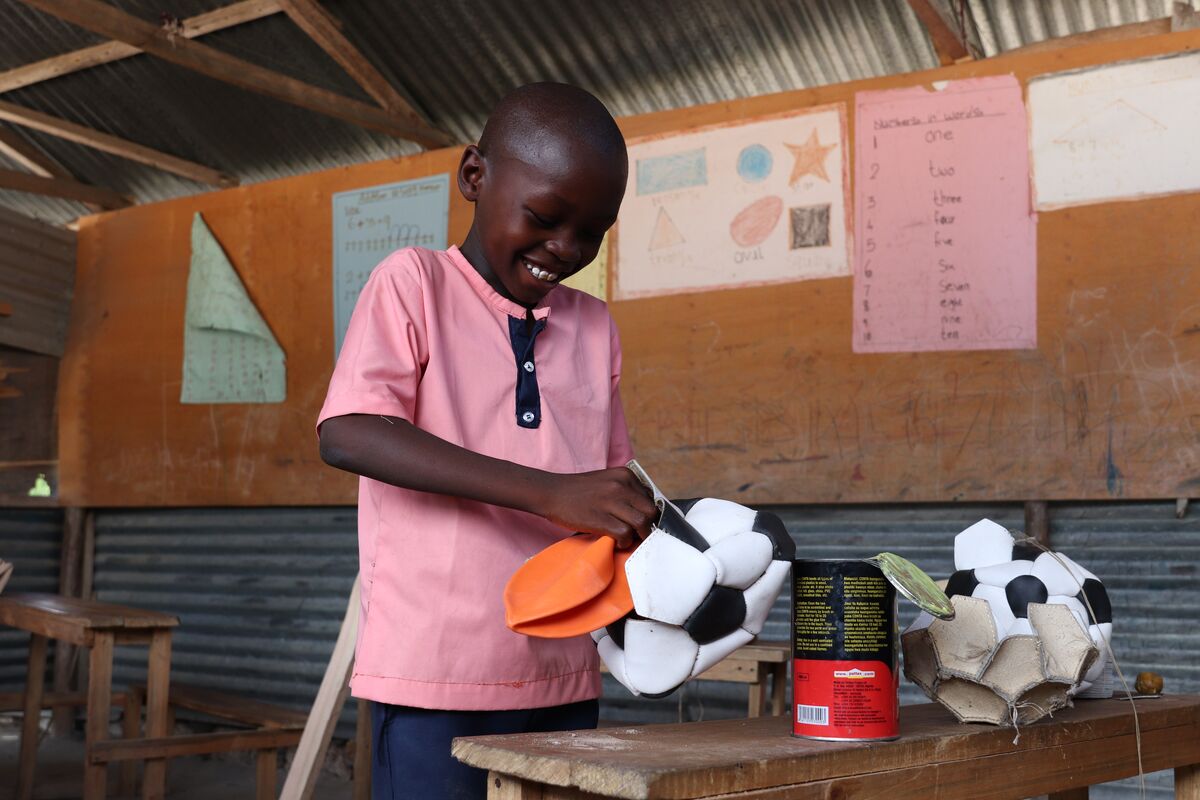
The boy inserts the tube into the ball so it can be inflated.
Balls are of different sizes, so the correct size of the tube, or bladder, must be used to avoid overstretching the ball if the tube is big.
If the tube is too small, the ball will not stretch out to the needed size, which might cause it to vibrate when kicked, says Gilbert, the facilitator at the center.
They then leave a small space that is used to insert the latex inner tube.
Step 4: Create a Single Punch
After inserting the inner tube, they identify one patch where the opening to the tube will be. They make a hole at the center of that particular patch using the single-tube punch. Being young, the kids use a stone to drive the single-tube punch into the leather patch.
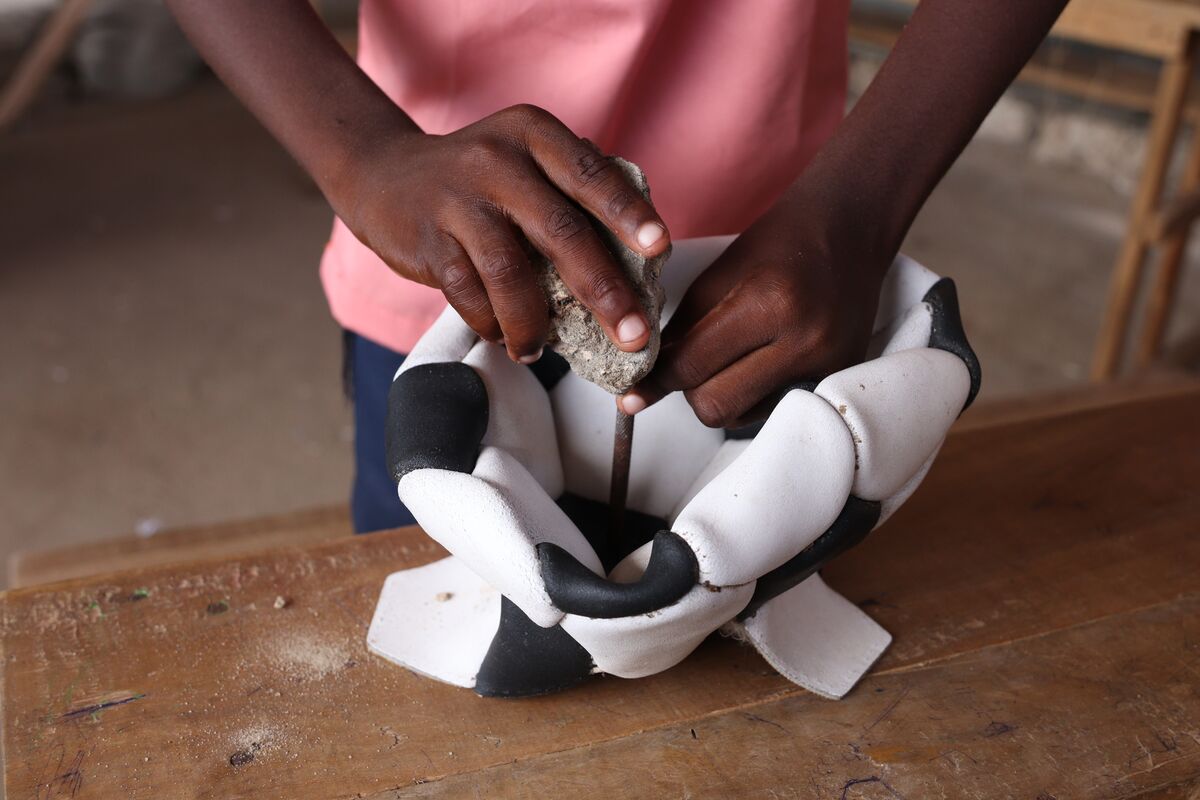
A rock is used on the single-tube punch to make a hole in the ball.
The small metallic part on the tube is then connected to the hole and the tube part around the hole is glued on to the inside of the leather patch using contact glue.
Step 5: Close the Ball
The kids use a ladder stitch to seal the ball. According to Gilbert, this is the hardest part of making a ball.
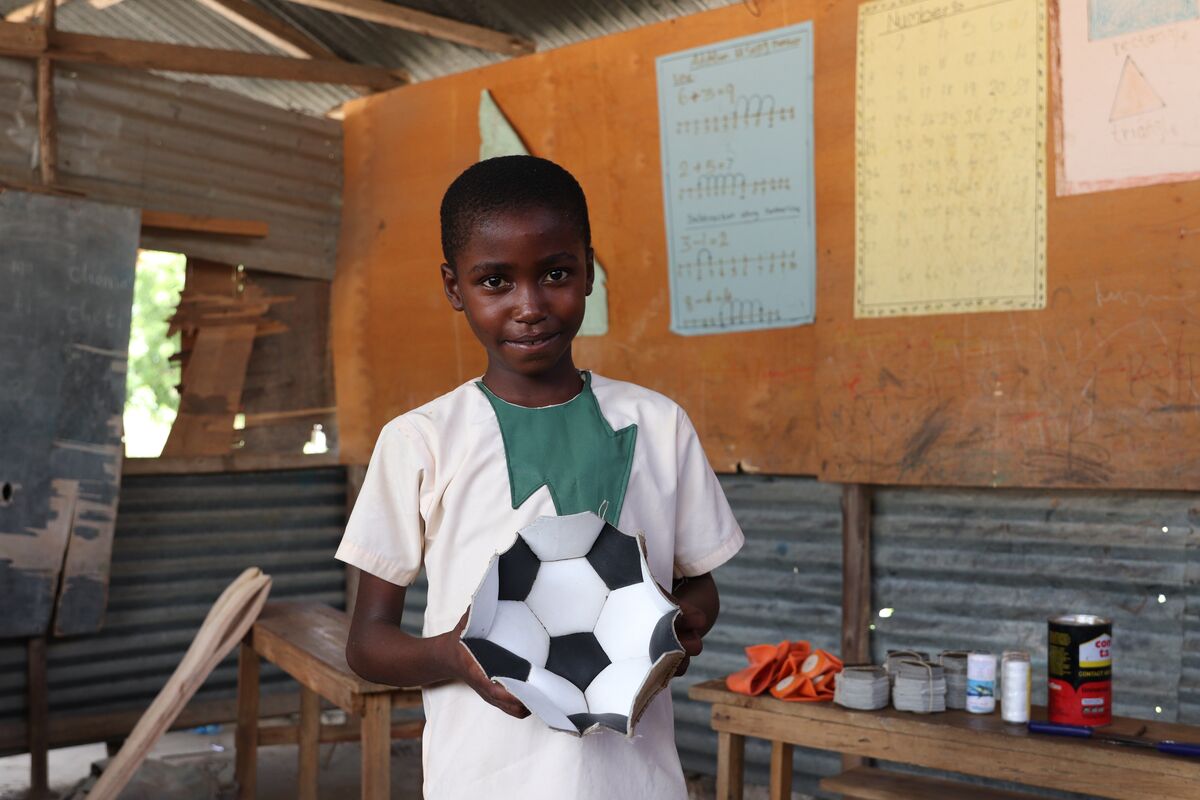
A boy holds a half ball before it is sewn into a whole soccer ball.
They have to stitch the entire open seam loosely first before they start to slowly tighten up the open seam. A curved needle is used in this process.
Step 6: Admire Your Work!
There’s nothing like holding a professional soccer ball in your hands that you made yourself and knowing you’ve gained a valuable new skill.
Your gift to OneChild’s Partners Fund will help us to open and expand more Hope Centers to meet the critical needs of more kids in hard places.
We are accountable to the children we serve AND to our donors.
Our accountability to our donors is one of our highest priorities. Our goal is to use the funds entrusted to us as wise stewards. To do this requires continued monitoring of our fund distribution. OneChild is also a member in good standing with the Evangelical Council for Financial Accountability (ECFA)
